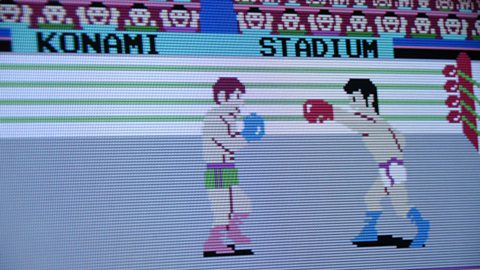How did video games become so exclusive?
With the PlayStation 5 and Xbox Series X set to hit the shelves at the end of 2020, this should be an exciting time for gamers – but some are feeling disillusioned. Across the industry, people have been coming forward with allegations of sexual misconduct, racial insensitivity and mistreatment of women.
Ubisoft has recently faced criticism for misusing a symbol associated with the Black Lives Matter movement, and in July three of the company’s senior executives stepped down amid an investigation into sexual misconduct. At Insomniac Games, a former employee claimed that it was the company’s widespread mistreatment of women that spurred her resignation. Is it any wonder that gamer Jay-Ann Lopez feels underrepresented by the products of this industry?
In Raise Your Game, Jay-Ann Lopez explores the BBC archives to discover how a white, male, macho culture has pervaded in gaming, and whether the industry looks set to become more inclusive any time soon.

Pong
In 1972, Atari released Pong, an arcade game that simulated a ping pong match with long white lines representing paddles and a small square passed between them as the ‘ball’.
The popularity of this game led the company to release Home Pong, a version which could be plugged into a television set and played from the comfort of your living room. Yet even this innocuous, gender-neutral sporting game had roots in misogyny: the code name for the prototype machine was Darlene, named after a female co-worker the company’s founder, Nolan Bushnell, thought was attractive. Other prototypes were also given the names of attractive female employees.
In 2018, the decision was made not to honour Nolan Bushnell, after industry members highlighted the sexist culture that was pervasive at the company.
-
![]()
Game on! The language of video games explained
How gaming is influencing our language. It's time for you to level up!
-
![]()
The 10 tastiest foods in video game history
Digital morsels that'll make your mouth water
Manic Miner
One of the initial pulls of video games such as Pong was their ability to engender a state of flow in the player, says Dr Tom Brock, senior lecturer in sociology at Manchester Metropolitan University. He explains that flow is a state of “pleasure and happiness that people derive from being absorbed in a challenging activity.” Even today, games such as Call of Duty are designed with the intention of drawing players into the flow of the game, from which they draw great pleasure.
If we fast forward around a decade from Pong’s conception to 1983, we arrive at the release of Manic Miner, a game that Jay-Ann explains “is often described as the game which brought us closer to the modern age.” It was one of the first games to include a continuously playing soundtrack and to introduce colour.

Can video games be called art?
Grayson Perry talks to the computer game creator and novelist Naomi Alderman.
E.T. and the rise of male gamers
In 1983, North America saw a video game crash which could have proved fatal to the industry. One game in particular, E.T. the Extra-Terrestrial, is said to have been a huge flop. It was produced off the back of the hit film with a very short lead time, and little direction given to the developer. Atari had banked on the game being a success, but it was anything but.
-
![]()
Game Changer: Fortnite on 4
Kevin Fong explores the video gaming smash hit Fortnite. What accounts for its extraordinary popularity, and should parents be worried?
As people lost faith in video games, the company was left with huge amounts of unsold stock, which are said to have been loaded onto lorries and buried in a landfill site in the heart of the desert in New Mexico. Gaming companies started to collapse as people lost interest in a hobby which had been deemed consuming and addictive.
The first woman to speak in a video game was Princess Peach in Mario. She uttered a single word: “Help!”
At this point, a specific demographic – young, white men – were targeted in an attempt to salvage the industry. This meant women, both as gamers and characters, took a back seat. Indeed, the first woman to speak in a video game was Princess Peach in Mario. She uttered a single word: “Help!”

Games for girls
Sheri Graner Ray, a computer game designer, has worked in the industry since the late 1980s. She clearly remembers how differently she was treated from her male colleagues:
A study by Teresa Lynch of The Ohio State University found that there were 1,600 games with playable female characters, compared with 30,000 games with male characters within the same timeframe.
“If you were a girl you were treated like an anomaly. The common belief of the industry was ‘girls don’t play games’ … if you did talk about trying to bring women into the industry, it was like ‘yeah, we need more girls to date more girls that like our stuff.” she says.
Sheri persistently fought for female representation in games, despite resistance from her colleagues, and started to design games for a female audience. In 1995, she created her first girls’ game. Eventually, the industry realised there was an appetite for games that women could identify with. The response was Tomb Raider, based around protagonist Lara Croft – whose depiction became increasingly sexualised in later sequels. A study by Teresa Lynch of The Ohio State University found that there were 1,600 games with playable female characters, compared with 30,000 games with male characters within the same timeframe.
Racial representation
Jay-Ann has found that there is a worrying lack of racial diversity in gaming. In 2018, she discovered that in the history of video games the total number of playable black female characters was just 14. Today, there are very few women of colour as the lead character in a multi-game franchise. This underrepresentation could have a negative impact on female gamers.
There is a worrying lack of racial diversity in gaming. In 2018, Jay-Ann discovered that in the history of video games the total number of playable black female characters was just 14.
When playing a game, you embody the character whose actions you are controlling and whose decisions you are making. Tom Brock says: “Any narrative-based game is often a series of interesting choices … a series of moral choices. We bring our biographies to that decision-making process, we bring ourselves into the characters.”
This leads gamers to feel an intense connection with the characters they are embodying, though this bond can be difficult to form if you don’t feel represented by the figure on the screen.

Changing culture
In 2014, many high-profile female video games journalists were targeted in a campaign of online harassment conducted under the hashtag #Gamergate. "Gamergate" became something of a watershed moment, raising mainstream awareness of a culture of toxic masculinity in gaming.
More recently. companies across the gaming industry have been vocally criticised and held to account for their toxic working environments and failure to respond to discriminatory behaviour.
In 2018, a culture of sexual harassment and gender discrimination was exposed at Riot Games, followed by a lawsuit when two women sued the company, which makes League of Legends, for violating the California Equal Pay Act. Following the exposé, Angela Roseboro was hired as the company’s Chief Diversity Officer. She explains that changing the workplace culture can in turn impact the culture represented in games.
“Representation matters, it tells me, ‘look, that game is for me, that product is for me.’ I took this role because I wanted other black girls to see someone sitting at that table, because you don’t see us there.” Angela stresses that inclusivity is vital, that it is key to tell stories that represent the way the world actually is.
There’s certainly a long way to go. Perhaps the most compelling stories in gaming will be the most inclusive ones. These are yet to be told.

Why video games have a positive effect on you
How playing video games has a positive effect on your wellbeing, mood and creativity.
More from Radio 4
-
![]()
Archive on 4: Raise Your Game
Jay-Ann Lopez looks at defining moments in the history of gaming, and asks if today’s toxic gaming culture can change.
-
![]()
Seven reasons playing video games is good for you
How gaming could make you a better person.
-
![]()
What does it take to be an eSports pro?
How much money are top players making, and what does the future hold for the industry?
-
![]()
Mysterious and mischievous medieval doodles
Why walking fish, knights fighting snails and mischievous monkeys give us so much insight.







